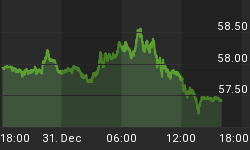The Chinese stock market recently saw its biggest selloff in 8 years as the dramatic 8.5% fall in Shanghai "A" shares also rattled markets around the world.
For the past few weeks China has been balancing its desire to keep the equity market from a complete meltdown, while still courting the international investment community with hopes of being a dominant player in the capital and currency markets.
But recently The International Monetary Fund (IMF) warned China's government about its concern over limiting investors' freedom to take equity out of financial markets. These concerns were raised when the IMF met with officials in to discuss the chances of including the yuan in the fund's basket of currencies, also known as Special Drawing Rights (SDR).
As China tries to balance the demise of its equity bubble while still keeping the illusion of free markets intact, two delusional narratives have started to circulate around Wall Street.
The first such Wall Street inspired delusion is that the collapsing Shanghai stock market will have no effect on the underlying Chinese economy. However, even though China's 260 million trading accounts may be a relatively small percentage of its total population, it's also the richest and most productive portion of its citizenry, which also happens to be equal to the entire U.S. population in 1993. And Chinese GDP growth accounts for 1/3 of total global growth. Therefore, we can already find the manifestation of slowing Chinese growth from the nascent fall in equity prices.
For example, the profit of China's industrial firms dropped 0.3% in June from a year earlier, that reversed a 0.6% rise in May and 2.6% gain in April. For the first six months of 2015, industrial profits were 0.7% lower than a year earlier.
In June, China's producer price index fell 4.8% on an annual basis, its 39th straight month of declines. In fact, the economy is headed for its poorest overall performance in a quarter of a century.
The second fallacy is Wall Street believes in the TV commercial that claims what happens in Las Vegas stays in Vegas. Or, in this case, what happens to the Chinese economy stays in China.
But the truth is the meltdown in China is already spreading all around the Asia Pacific region. For example, Taiwan's year over year export growth has hit multi-year lows due to collapsing trade with China.
But perhaps the biggest indicator of the magnitude of China's slowdown can be found in the global commodities market. Most pundits are trying to link the recent selloff in commodities strictly to the rising dollar as measured by the Dollar Index (DXY). But that Index is actually down about 3% since March. During which time the rout in precious and base metals, energy and agriculture has greatly accelerated.
We see the Bloomberg Commodities index now at a thirteen year low. Copper is down 28% for the year, tin is down 30%, and nickel is down 44%. And then we have gold. Last week China dumped 4 tons on the market, causing the price of the precious metal to fall almost 4% within a matter of seconds. This had little to do with the value of the dollar on the DXY, but it was rather mostly about the waning demand in China from its imploding economy and the need to sell what you can when capital controls are in place.
Indeed, these commodity prices began to plunge concurrently with China's steep drop in officially reported GDP growth from 12% in 2010, to just 7% today -- the real current growth rate in China is closer to 4% when measured by private data. It is no coincidence that the price of copper dropped from $4.52, to $2.37 during this same timeframe.
The true message of plunging commodity markets is that the Chinese government wasted $20 trillion worth of credit digging holes to mollify the fallout from the Great Recession of 2007; primarily creating a huge fixed asset bubble with little economic viability. And then forced another $1.2 trillion in margin debt to engender a consumption-based economy; primarily by creating a stock market bubble after the fixed asset bubble strategy began to fail miserably.
So where does this leave the global economy now? US GDP is growing at a meager 1.5% for the first half of 2015. And the second half looks even worse, as an organic U.S. slowdown meets cascading global trade. Adding to this malaise, it appears as though the handful of U.S. stocks that have led the rally are finally starting to join the hangover party. For instance, social media stocks are now crashing harder than commodity prices, with Yelp recently falling 27% in one day after dropping 60% YOY; Twitter has also tumbled 45% in the last 52 weeks; and Facebook recently dropping nearly 5% after reporting a miss in the number of eyeballs staring at their cellphones checking the like box.
But here is the most important take; the arrogance that led the Fed to believe it could save the world in 2008 by manipulating markets is causing Ms. Yellen and co. to promulgate the idea that it can now raise rates into a global slow down without negative repercussions -- thereby, demonstrating its success in rescuing the economy from the Great Recession by proving interest rates can now rise with impunity.
However, the truth is the Fed hasn't raised interest rates in a decade and will probably never be able to move much off the zero bound range without totally collapsing markets and the economy. I think the Fed is aware of this and that's why it is continually finding excuses not to start a rate hiking cycle -- just like it did yet again in the July meeting. Therefore, the real money to be made is in fading the massively overcrowded trade that believes U.S. stocks are immune from the worldwide economic slowdown and that the U.S. dollar will be in a secular bull market.
















